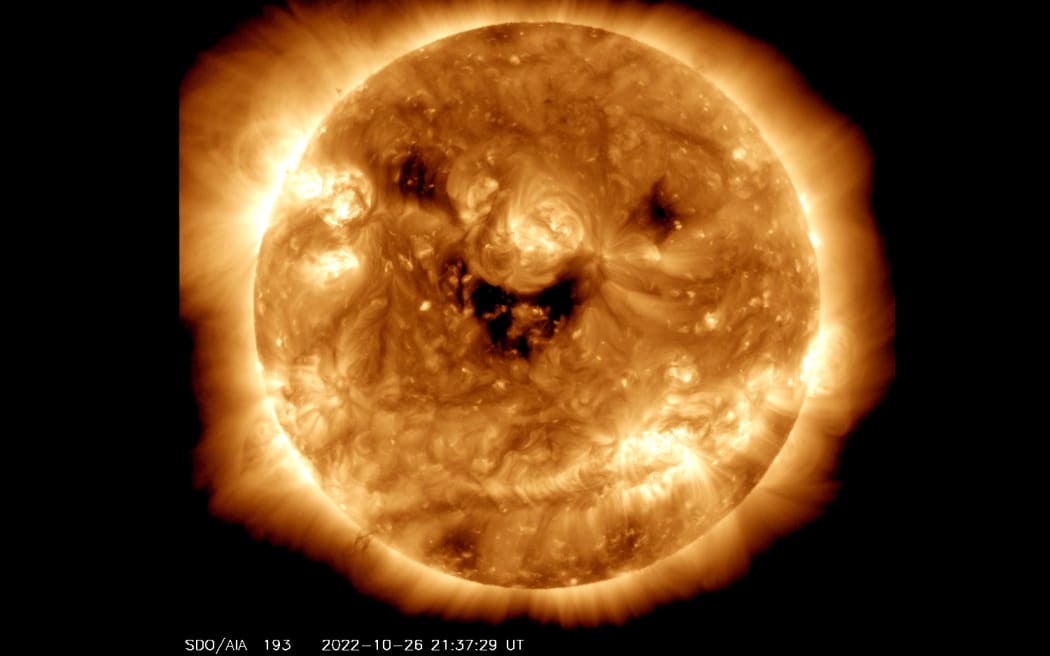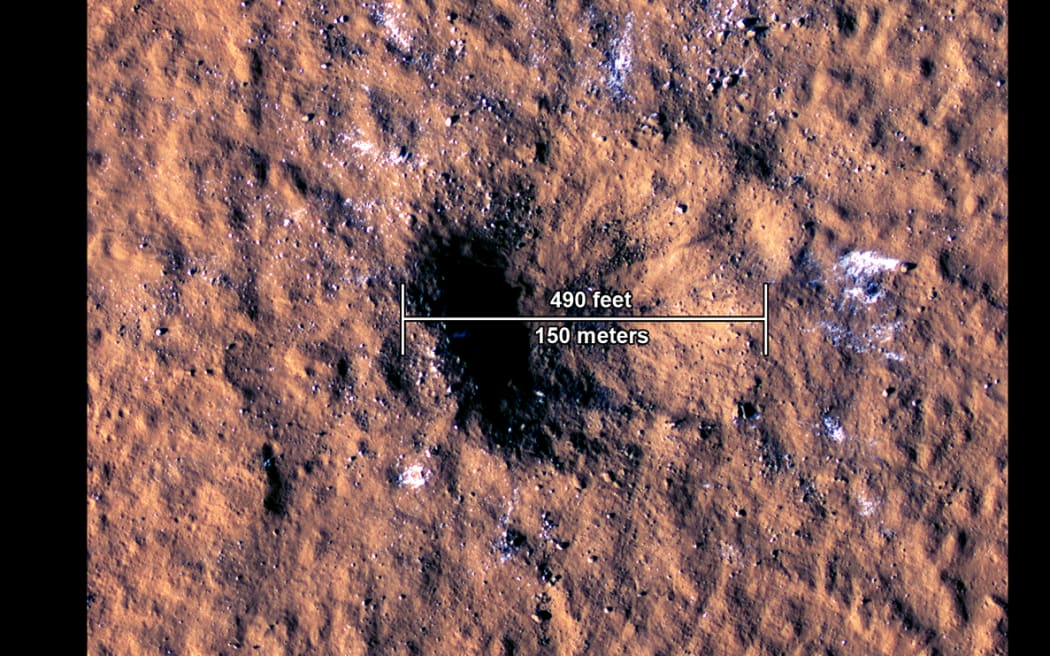NASA's Solar Dynamics Observatory captures Sun 'smiling'
NASA's Solar Dynamics Observatory captures Sun 'smiling'

NASA's Solar Dynamics Observatory captured an image of the sun "smiling" in 193 angstrom light on 26 October. Photo: Supplied / NASA/GSFC/SDO
NASA's Solar Dynamics Observatory has captured an image of the Sun "smiling".
The space agency tweeted an image of the Sun in ultraviolet light with dark patches resembling a smile.
"These dark patches on the Sun are known as coronal holes and are regions where fast solar wind gushes out into space," NASA said on Twitter.
The observatory is the first mission to be launched for NASA's Living With a Star program, which is designed to understand the causes of solar variability and its impact on Earth.
NASA says the observatory's goal is to understand the solar variations that influence life on Earth and humanity's technological systems by determining how the Sun's magnetic field is generated and structured and how its magnetic energy is converted and released as solar wind and energetic particles.
Meteorite caused giant Martian quake
Meanwhile, scientists have discovered a meteorite strike estimated to be one of the biggest seen on Mars was the cause of a magnitude four marsquake detected on the planet in December last year.

NASA shows the impact of a massive meteorite crater on Mars. Photo: Supplied / NASA
The meteorite excavated boulder-size chunks of ice buried closer to the Martian equator than ever found before.
According to NASA, scientists determined the quake resulted from a meteorite impact when they looked at before-and-after images from NASA's Mars Reconnaissance Orbiter and spotted a new, yawning crater.
The meteorite is estimated to have spanned five to 12 metres and will have implications for NASA's plans to send astronauts to the Red Planet.
The marsquake was captured by NASA's InSight Lander and is believed to have resulted in one of the largest craters ever witnessed forming any place in the solar system, according to NASA.
Brown University's Ingrid Daubar who leads InSight's Impact Science Working Group said it was unprecedented to discover a fresh impact of this size.
"It's an exciting moment in geologic history, and we got to witness it."
- ABC
https://www.rnz.co.nz/news/world/477696/nasa-s-solar-dynamics-observatory-captures-sun-smiling



Comments
Post a Comment